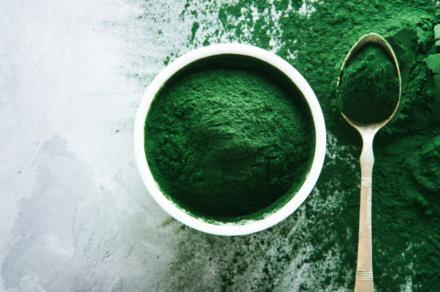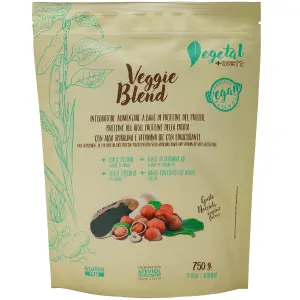Spirulina
Spirulina is extremely rich in proteins, macronutrients which are fundamental for human nutrition. On average, from 100 grams of spirulina 50-60 grams of high biological value protein are obtained (for comparison, consider that in 100 grams of meat there are 20-25 grams of protein!). The dry extract contains many essential nutrients, such as vitamins (B1, B2, B3, B6, folic acid, B12, C, D, E), mineral salts (potassium, calcium, chromium, copper, iron, magnesium, manganese, phosphorus , selenium, sodium, zinc) and fatty acids of the omega 3 series (Hoseini et al., Mini-Rev Med Chem, 2013). Spirulina is also a remarkable source of antioxidants, protective molecules that can inactivate and protect us from free radicals, i.e. those substances that can damage the tissues of our cells and organs if they are present in too high quantities. Antioxidants are used precisely to keep free radicals content low in the cell and to preserve us from cellular aging.
Overall, these and other nutrients contained in Spirulina are linked to numerous benefits in the field of human nutrition. Potential health effects include immunomodulatory, antioxidant, antiviral, antibacterial activity (Finamore et al., Oxid Med Cell Longev, 2017).
If from a nutritional point of view spirulina has many properties, on the other hand, much attention must be paid to the cultivation method. If this is carried out in outdoor ponds or in bioreactors exposed to the external environment, there is the considerable risk of possible contamination of the culture with other potentially harmful undesirable micro-organisms and capable of producing and releasing toxins. It is therefore very important, when purchasing a product containing Spirulina, to make sure that the latter is produced in closed bioreactors separated from the external environment and from contamination, well monitored and under control. Only in this way it is possible to benefit from all the different and many nutritional properties of this exceptional Superfood, without any risk to health.
Another aspect of great importance is eco-sustainability. While on the one hand conventional food-based food supply chains are becoming a major problem in terms of global environmental pollution, such as greenhouse gas emissions, excessive land use and water footprint, the production of algae and microalgae biomasses destined for human nutrition represent a future food supply route with low environmental impact (Finamore et al., Oxid Med Cell Longev, 2017).
+Watt Advice
Recommended use: Dissolve 3 measuring scoops (corresponding to 30 g) of Veggie Blend in 250-300 mL of water and shake before taking. The green dots visible in the powder product and the green coloring of the drink are due to the presence of spirulina algae.


